Dear Dani, Grace and Jude,
Note: This page is advice for Grace, Jude and John. For any other reader, it’s information only. No therapeutic relationship is formed – read this.
This page contains three options for how to tackle high fat meals with carbs.
Breakfasts such as; Full English breakfast, buttery panckes with maple syrup and thick cheese on toast
Meals such as; Cheesy pizza, fish and chips, fast food burger and chips, and lasagne with chips and garlic bread.
I am sure there are more than three ways to do it. These are just what work for me and the young people I help.
So feel free to experiment with other methods and let me know how they go. I may borrow them if they work!
A quick recap of what happens when you get stuck into a cheesy pizza!
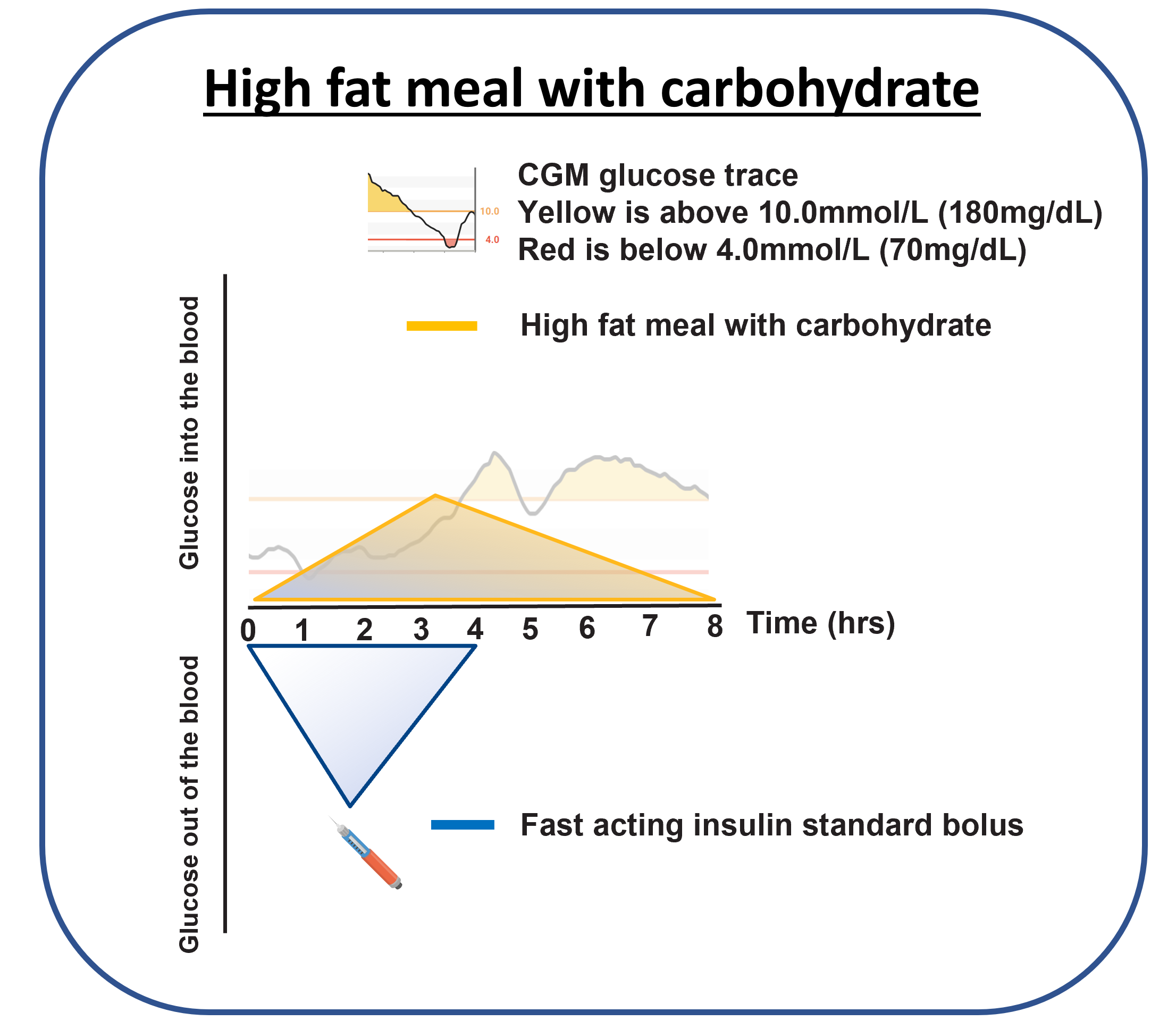
Why such as rise in glucose after three hours that requires massive amounts of insulin?
You know this by now thanks to,
The Drive: Episode 140 – Gerald Schumer’s deep dive into insulin resistance.
It’s the,
The DAG (diacylglycerol) effect
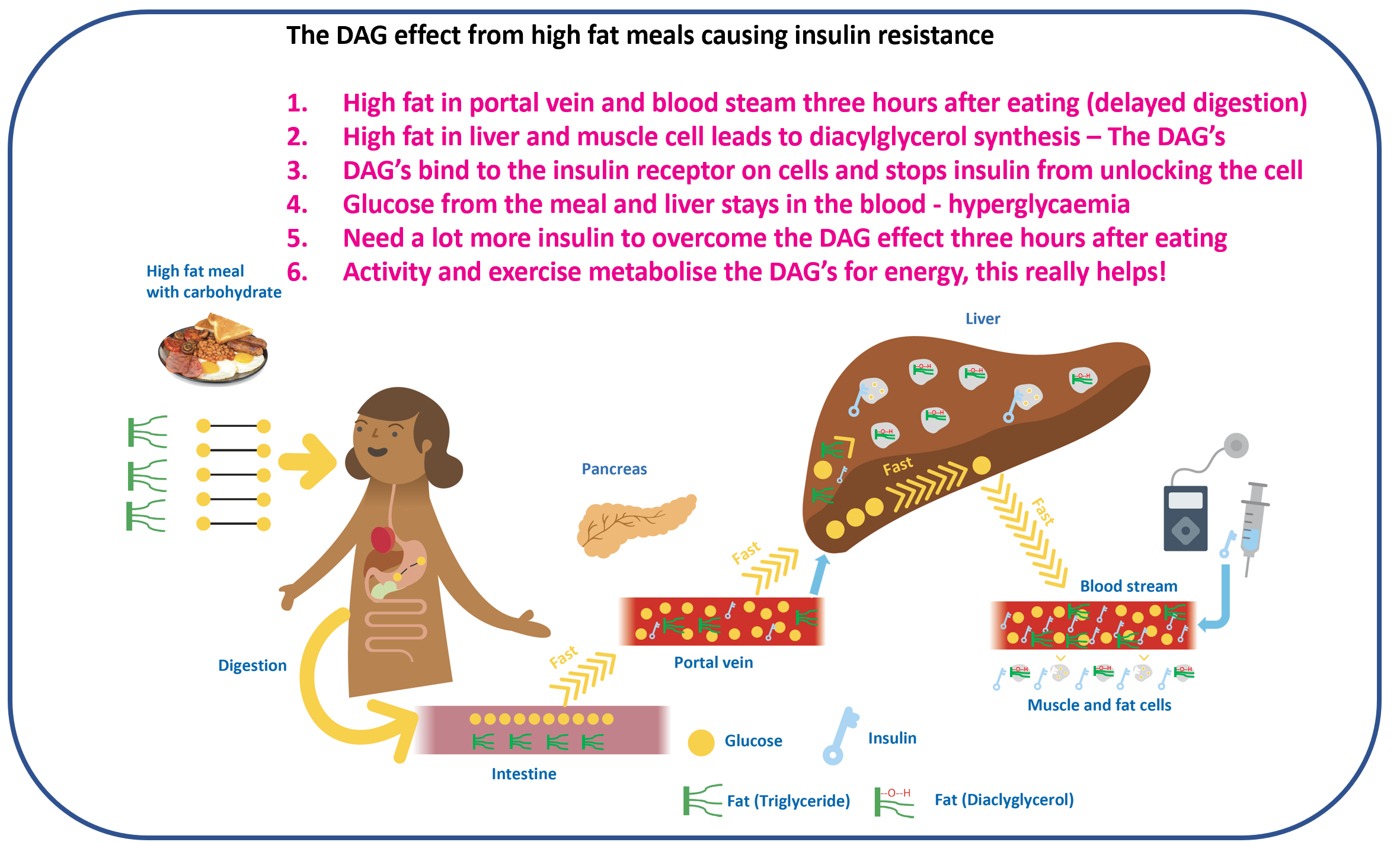
A quick hop on the soap box.
It’s possible to overcome the DAG effect and enjoy high fat meals.
However, this is usually achieved by giving huge amounts of extra insulin.
The above graphic shows this pumps the bloodstream full of insulin, whereas a person without type 1 diabetes would only have really high levels in the portal vein. Remember consistently high bloodstream levels of insulin increases the risk of cardiovascular disease.
So if your eat takeaways all the time with type 1 diabetes and use extra insulin to manage it, you are putting yourself at risk. Grace and Jude, keep an eye on your units per kilogram and your risk on the Measuring Success page.
To overcome the DAG effect you have three options.
First, by giving extra insulin by a split bolus and spreading it out so it covers the rise after three hours.
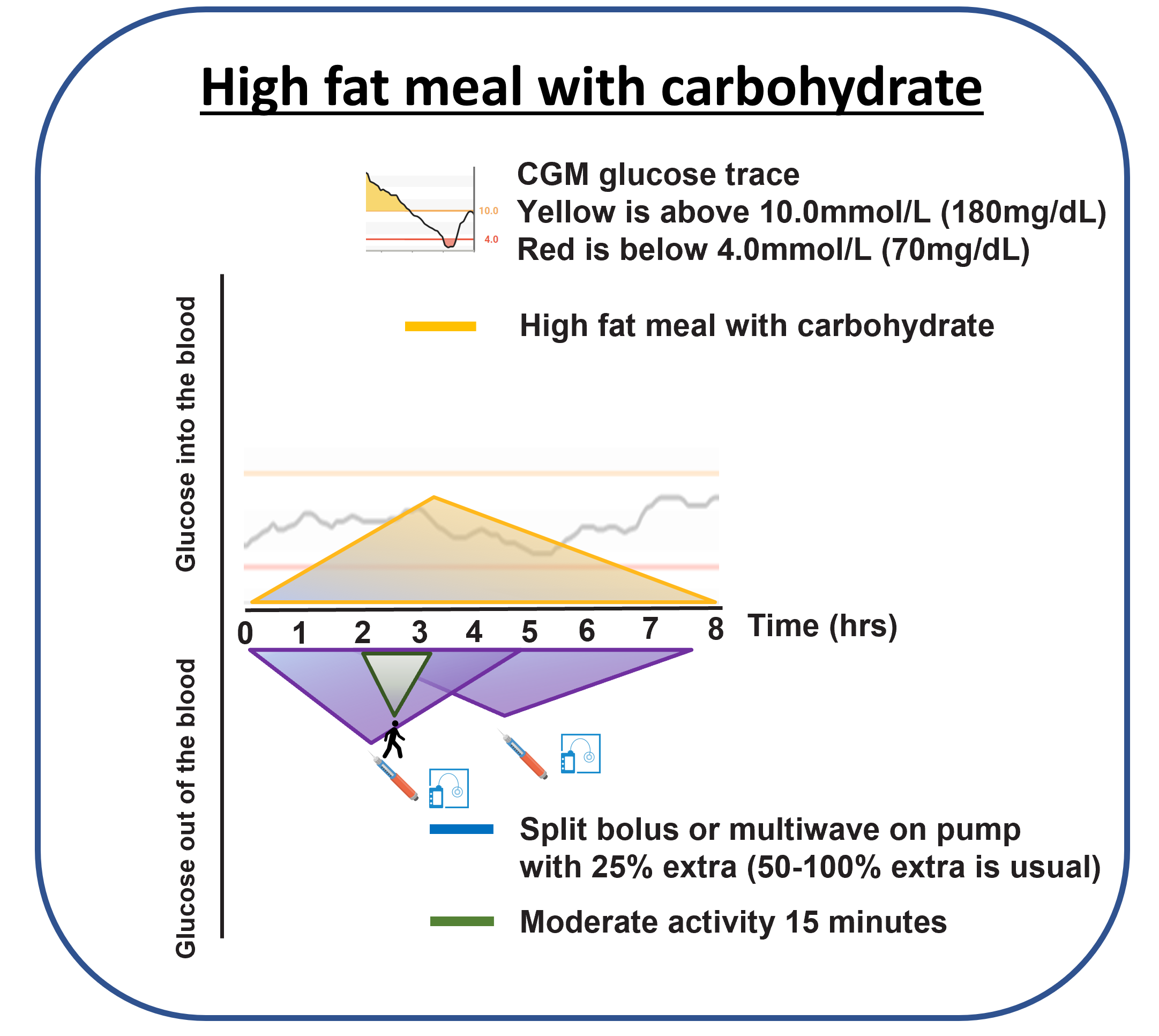
How much extra and how to spread it out?
Based on the research form the detailed guide, this is how to experiment safely:
- A meal is only high fat enough to warrant extra insulin if your CGM has shown it previously. Just like the first picture on this page. Remember, the glucose never lies, let it by thy guide.
- Once the DAG effect is identified for a meal, next time,
- Count the carbs and work out the mealtime insulin dose.
- Increase the dose by 25%. Simple maths – insulin dose x 1.25
- Split the dose in half:
- If on a pump: 50% before the meal and 50% extended over two hours.
- If on injections: 50% before the meal and 50% one hour after.
- If possible do 15 minutes of moderate activity two hours after eating.
- If the glucose is high six hours after, then next time increase the extra insulin by 25% and repeat this process.
Be prepared to need more than 25% extra for high fat meals with carbs. The research shows on average about 50% extra is needed.
When I eat pizza, not often, I need 100% extra to keep up with that cheesy beast!
I like the taste but always regrets eating it! It’s a love hate thing.
This guide contains what we have discussed.

Second option.
You can be very active after meals to:
- Make the insulin stronger and last longer
- Open the side doors to cells that do not require insulin
- Burn up the DAG inside the cell for energy to allow insulin to bind.
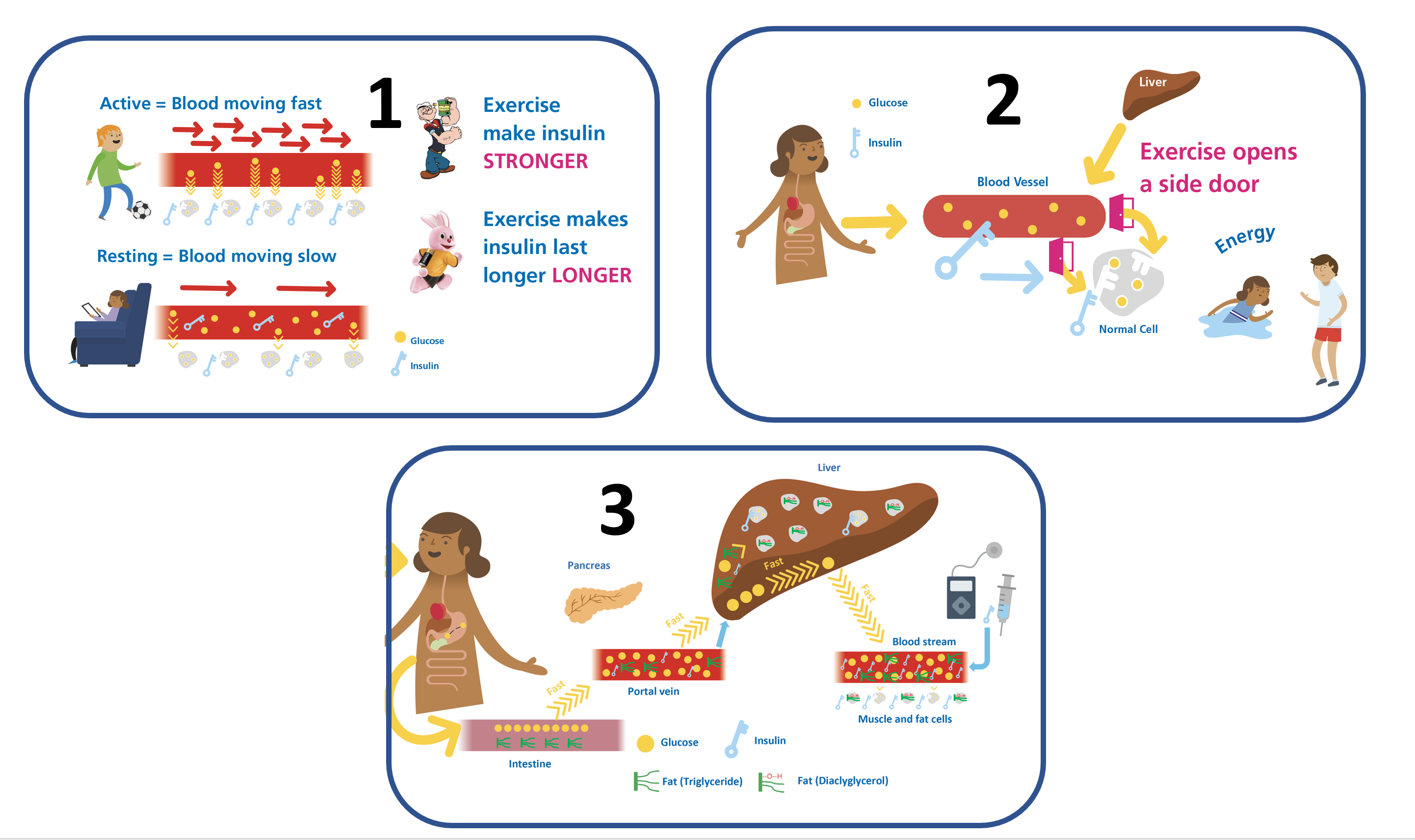
The result of this triple threat can be seen in this graphic.
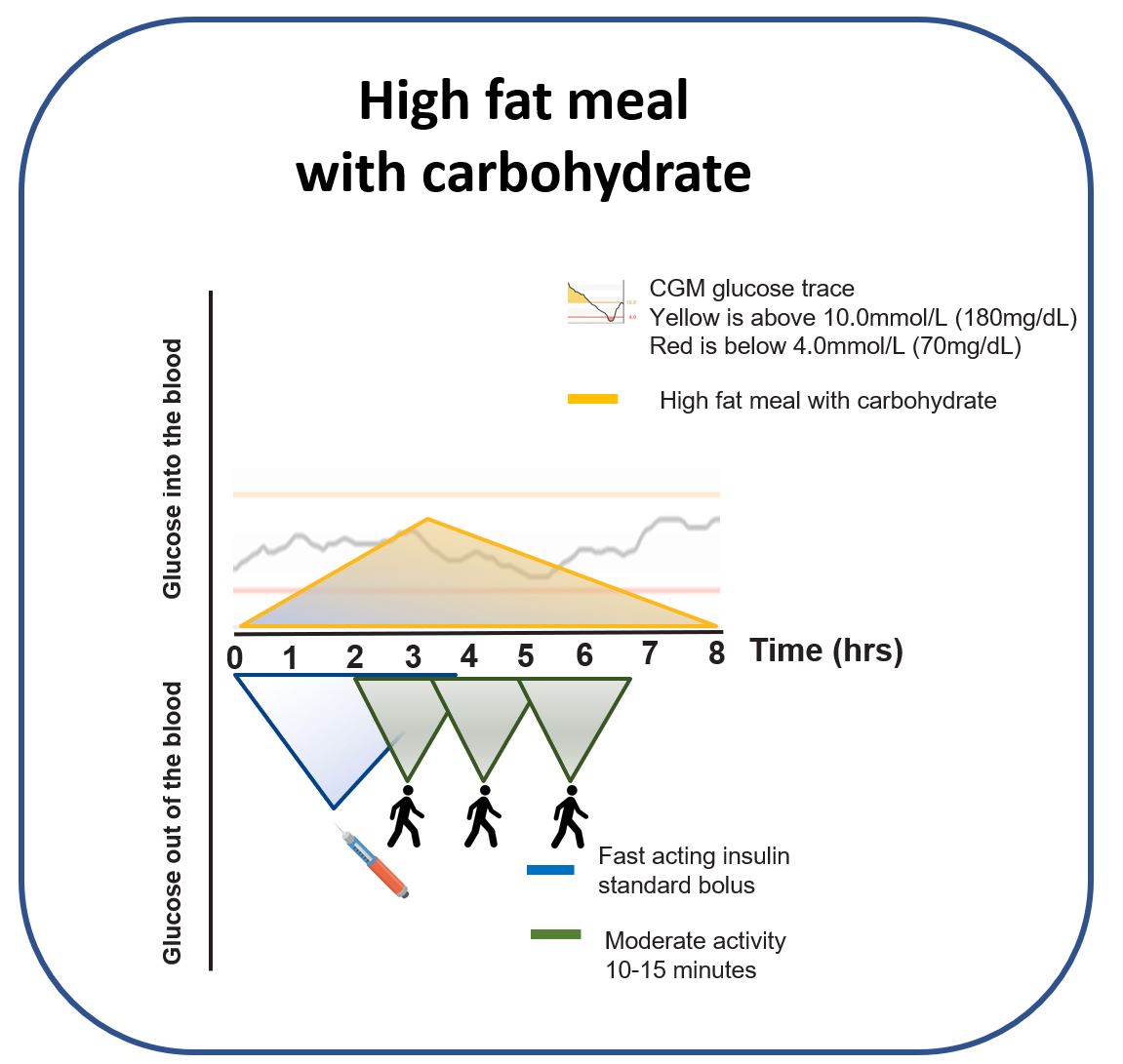
Third option. You can set your high alarm and use GAME, just like I did on Christmas day 2019.
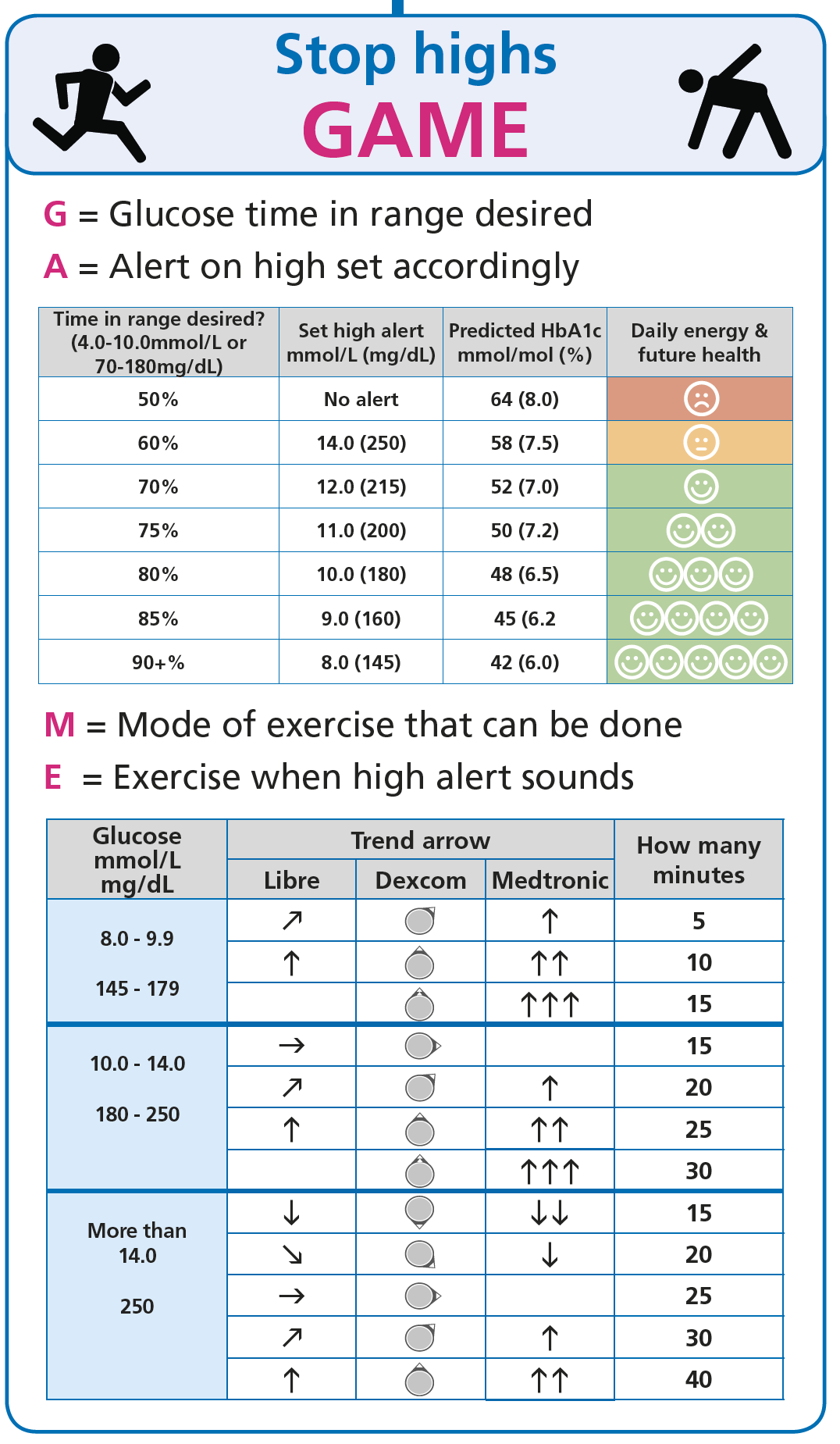
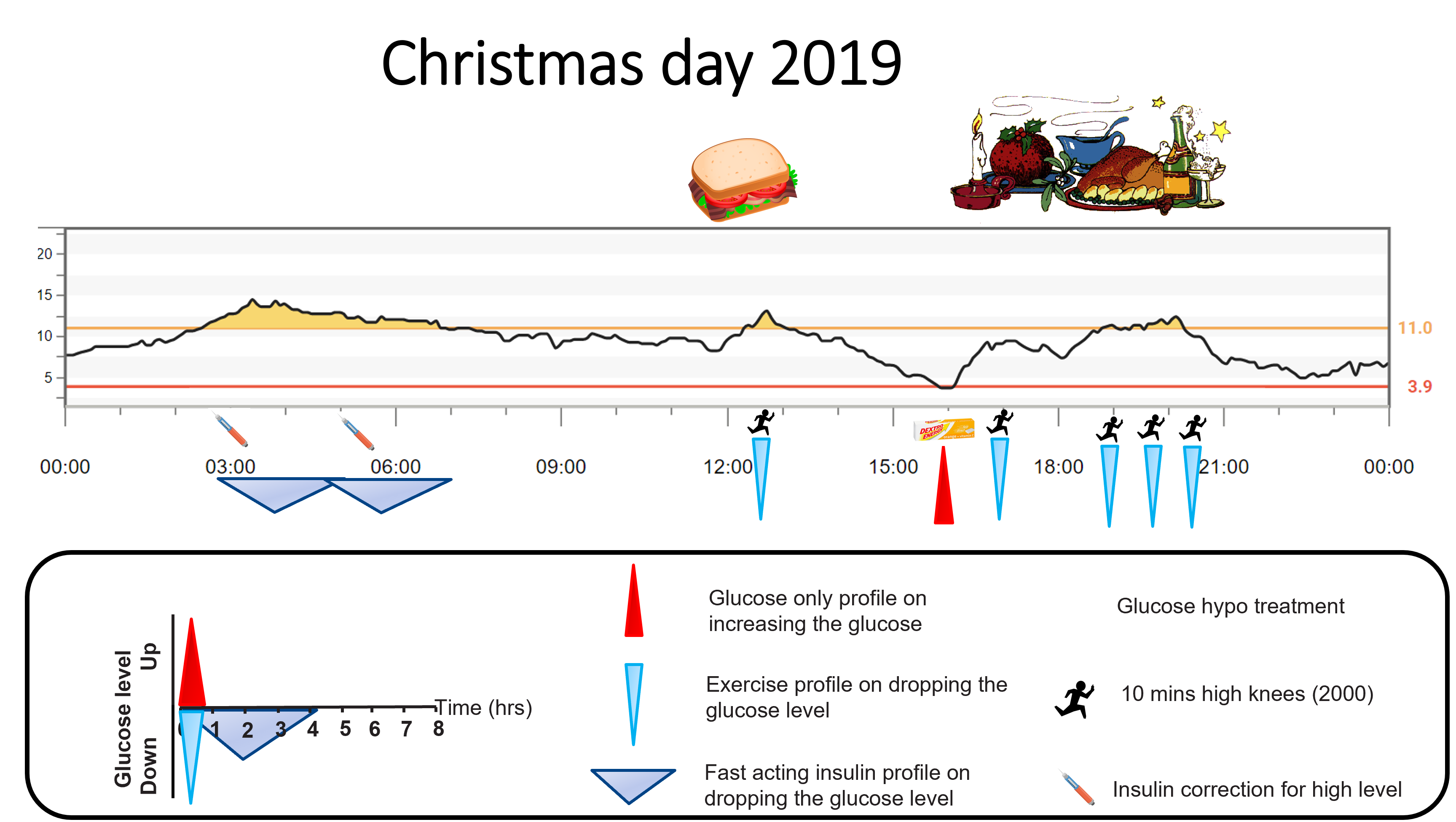
There’s a guide for high carb, balanced meals and high fat.
Can you not pull them all together?
Dani, I thought you would never ask.
Next step: Infographic – Mealtime Insulin Guide
